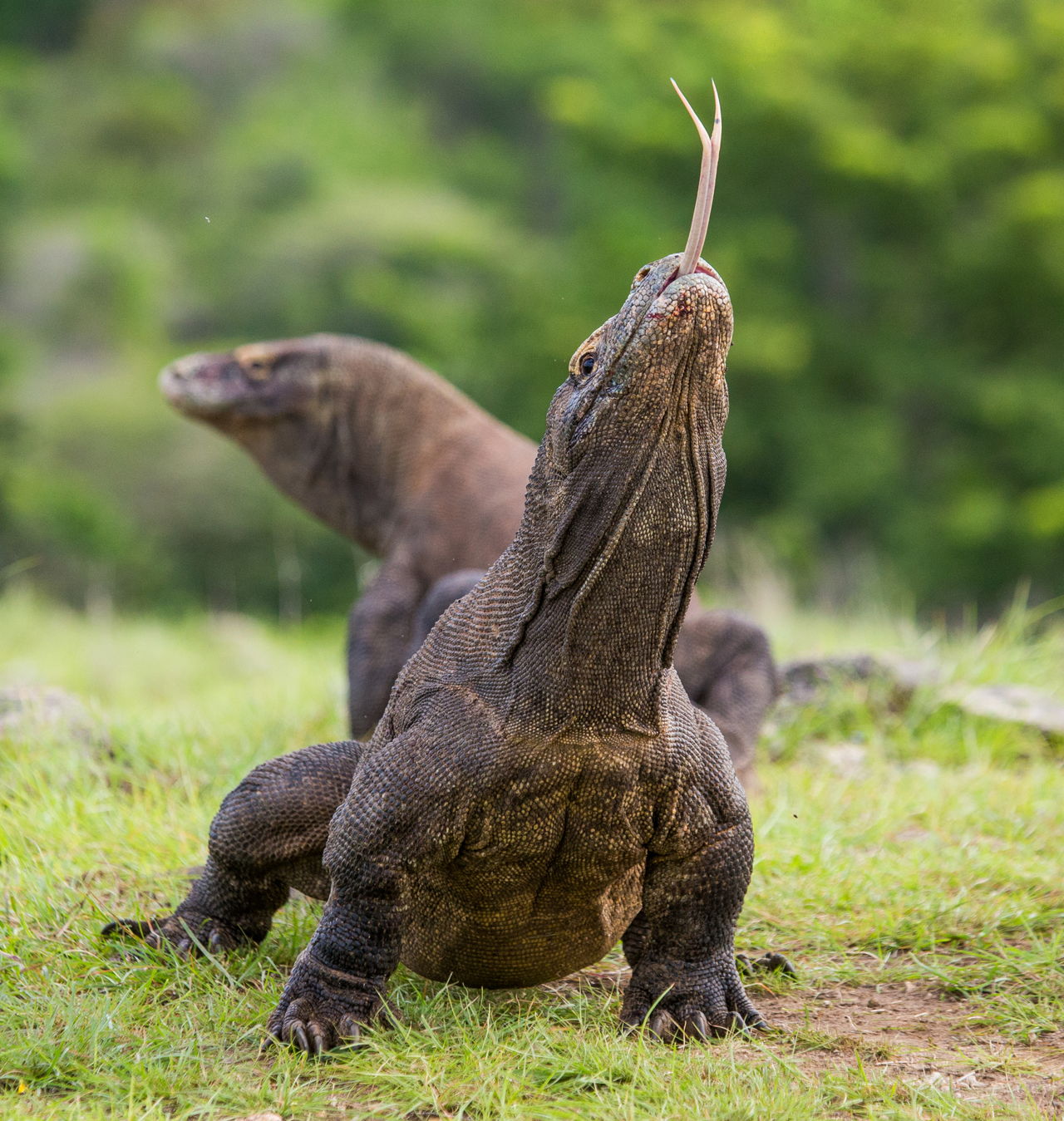

Komodo dragons have thrived in the harsh climate of the Indonesian Islands for millions of years.
#Comodo dragon habitat series
Females will develop a series of decoy nests to eliminate risk of predation! She will lay up to 20 eggs, which is called a clutch! Komodo dragons are predominately solitary animals outside of mating season. A Komodo dragon will produce a lethal bite, although it can take up to four days for their prey to die! They have strong jaw muscles and serrated teeth in order to efficiently tear and eat large chunks of meat. Their tongues are yellow and forked and, just like snakes, they use this to ‘smell’ the air to detect their next meal, which may include monkey, goat or deer. Name: Komodo Dragon (Varanus komodoensis) Conservation Status: Endangered (2021 IUCN Red List) Population Estimate: 1,400 adults Range: Indonesia (islands of. The Komodo dragon (Varanus komodoensis), also known as the Komodo monitor, is a member of the monitor lizard family Varanidae that is endemic to the.

They can be identified by their stone colouration, long tails and strong, agile limbs. Komodo Dragons live on the islands of Lesser Sunda, Rinca, Gili Montong, Gili Dasami, and the Flores Islands of Indonesia. These powerful predators are found throughout a small group of Indonesian Islands, including Rinca, Flores and Komodo Island. For your dragon quest, dont bother yourself with Scottish castles or cloud-shrouded mountains in China. This shows that when we take those difficult decisions and focus on recovery we can actually achieve that.Introducing the world’s largest species of lizard, right here at Australia Zoo – the incredible Komodo dragon! This venomous reptile can be seen soaking up the sun’s rays and just being drop-dead gorgeous! Galland said: “When fishery managers are focused on a particular problem and dedicate efforts to fix that problem, they are able to do that, including reducing fish quotas when stakeholders don’t want them lowered.

The success of albacore and southern bluefin tuna is due to the introduction of “harvest strategies” where the managers determine ahead of time what rules or actions they will take based on the status of the stock, and these new ratings are proof that those strategies are working. “Management has improved for bluefin tuna and albacore around the world in the past decade but we do still offer some caution in that IUCN ratings are based on entire species and it doesn’t allow for the assessment team to look at genetically distinct populations.”įor example, Atlantic bluefin is of least concern, but the western Atlantic population continues to experience serious declines, and is still at threat of being lost entirely. “The new ratings certainly do bring some good news,” said Grantly Galland at the Pew Charitable Trusts.
#Comodo dragon habitat update
The IUCN red list update included some good news – four out of seven species of commercially fished tuna – Atlantic bluefin, southern bluefin, albacore and yellowfin – are on the path to recovery, thanks to the introduction of fishing quotas in the past 10 years. Sharks and rays are also burdened by the bad luck of their biology – they reproduce slowly and in low numbers, which means they are slower to bounce back compared with other species. The organisation also included a comprehensive reassessment of shark and ray species, with 37% now threatened with extinction due to overfishing, loss of habitat and the climate crisis. Fossils, from 50,000 years ago, show they used to live in. Komodo Dragon Sexual Maturity: 5-7 years Life Span: 15-20 years possibly longer Range: Sunda Islands of Indonesia Habitat: Mainly forest and savanna, but.

Out of 138,000 species on the updated IUCN red list, more than 38,000 are threatened with extinction. Komodo dragons have thrived in the harsh climate of the Indonesian Islands for millions of years. HABITAT Throughout the islands, from the. The subpopulation in Komodo national park is currently stable and protected. Info RANGE Found only on the dry, scrub-covered Indonesian Islands of Komodo, Gili Motang, Padar, Rinca, and Flores. They discovered where they were living on Flores and now hope to do more focused conservation and community work in those areas. “It is the most charismatic reptile on the planet yet until last year we didn’t really know where the komodos lived,” said Garcia, who was part of a three-year project with the Indonesian NGO Komodo Survival Programme that involved using camera traps to work out their movements.


 0 kommentar(er)
0 kommentar(er)
